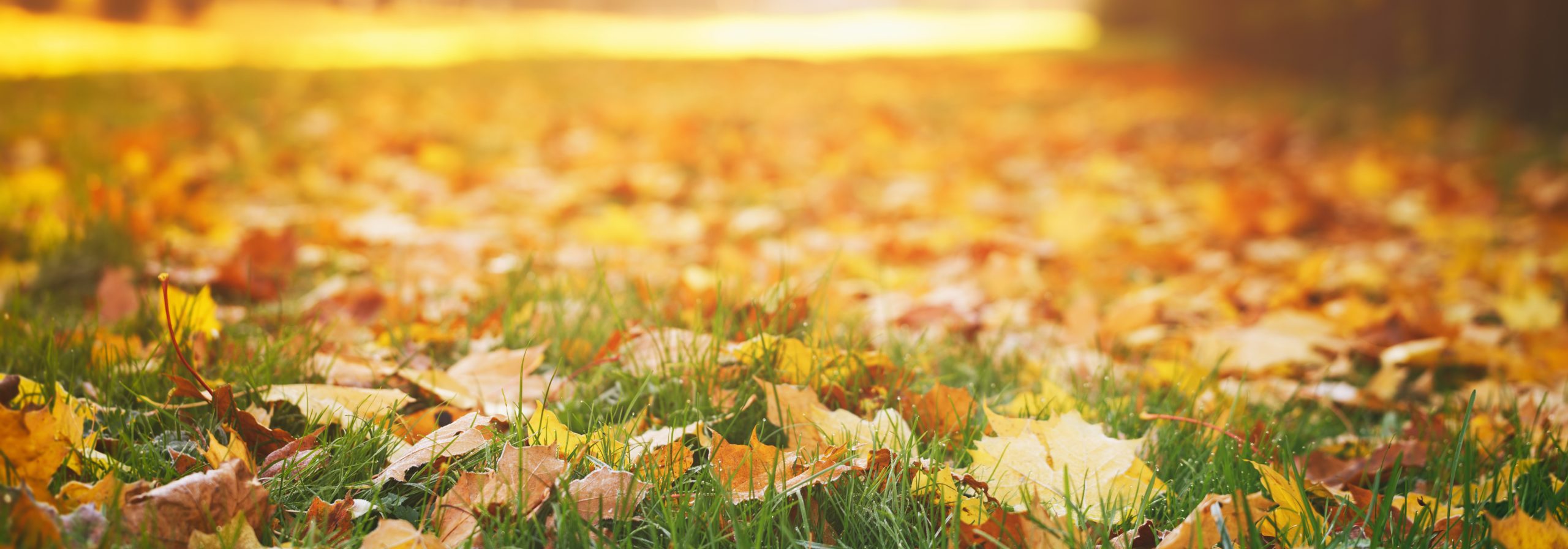The days are getting shorter, drier, and the smell of autumn is in the air, but if you’re a homeowner, you’re likely headed for that somewhat dreaded period of lawn maintenance that precedes the true cold of winter: fall leaves. Plenty of folks don’t worry much about fall leaves and instead just let them go where they may, but others prefer to keep their cool-season grasses growing at their best during some of the best weather of the year.
You don’t have to break your back raking, bagging, and disposing of leaves this fall, so we’ve put together a list of things you can do with all those fall leaves.
Mulch Them
Leaves are a quintessential part of your lawn’s ecosystem and provide much-needed organic matter, volume, and carbon to help ease the compaction caused by an entire summer’s worth of use. The simplest thing to do with fall leaves is to simply rake them into neat rows and run your lawnmower over them. This may seem like a silly task, but with so much organic matter quite literally falling from the sky, you’ll be kicking yourself in the spring for not taking advantage of this free compostable fertilizer.
By mulching your leaves, you’ll essentially be eliminating a step that mother nature would take herself by breaking down the leaves into smaller bits. From there, microbes in the soil, as well as your lawn’s growth (what remains of it in the waning warm days), will break down the leaves and provide much-needed humus to your soil.
Get a Head Start on Your Garden
Just like lawns, gardens tend to get compacted during the summer. Hot, dry summer days, heavy rainfall, and gravity work together to compact gardens and lower the organic matter in your soil impacting root growth. Instead of bagging and disposing of leaves, start a lasagna garden by layering wet cardboard with leaves, grass clippings, and compost to give your garden a needed boost.
By the time summer rolls around, your lasagna garden will have composted, compacted some, and created some rich, nutritious soil for whatever plants you choose to grow in the spring.
Start a Compost Pile or Add to Your Compost
Leaves are rich in carbon and provide moisture absorption in composted material. In fact, you should actually be building your compost pile in a 2:1 ratio of two parts “brown” material consisting of leaves, grass clippings, straw, and pine needles (for example) and one part food scraps and other bio-degradable compost material.
Keeping this ratio will ensure that the resulting compost will not only have the rich nutritional value of food scraps which are typically rich in nitrogen, phosphorous, and potassium but the moisture absorbing and carbon-producing aspects of brown material from leaves. This combination will ensure that you’re putting out the best possibly compost into your garden or lawn come springtime.
Use Leaves for Insulation and Mulch
Instead of heading to your hardware store or garden center for mulch to protect fragile plants from the winter’s harsh cold, consider using free insulation and mulch from leaves. Protect trees, plants, and cover perennials with leaves to ensure that they’ll have the best possible chance to come back strong in the spring.
Additionally, you’ll be creating a perfect ecosystem for microbes and decomposers to further feed your plants and give them extra love!
If you’re looking to improve your outdoor space by upgrading your outdoor space with a new home or needed updates this fall, then get in touch with Tidewater Mortgage Services, Inc. today!


